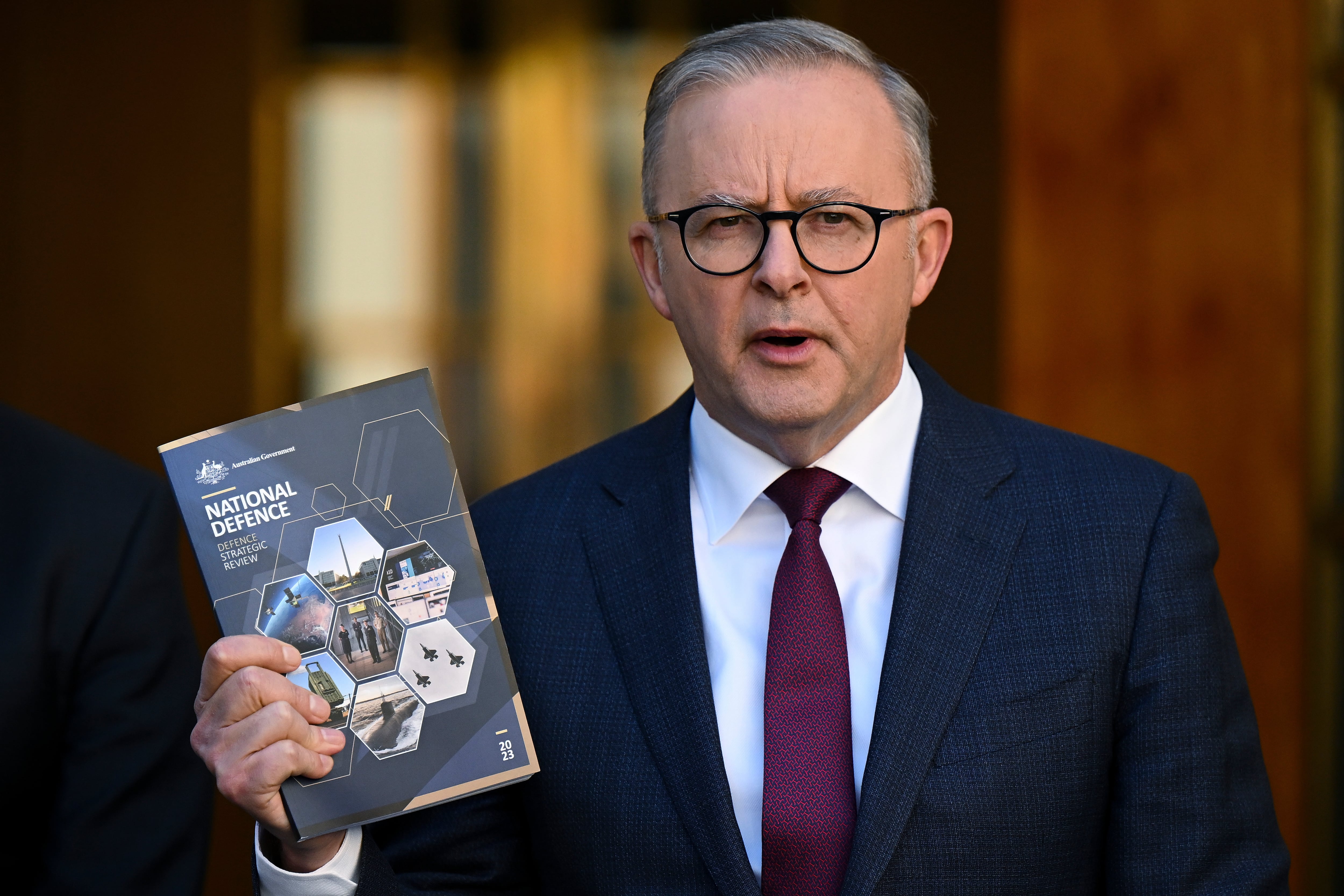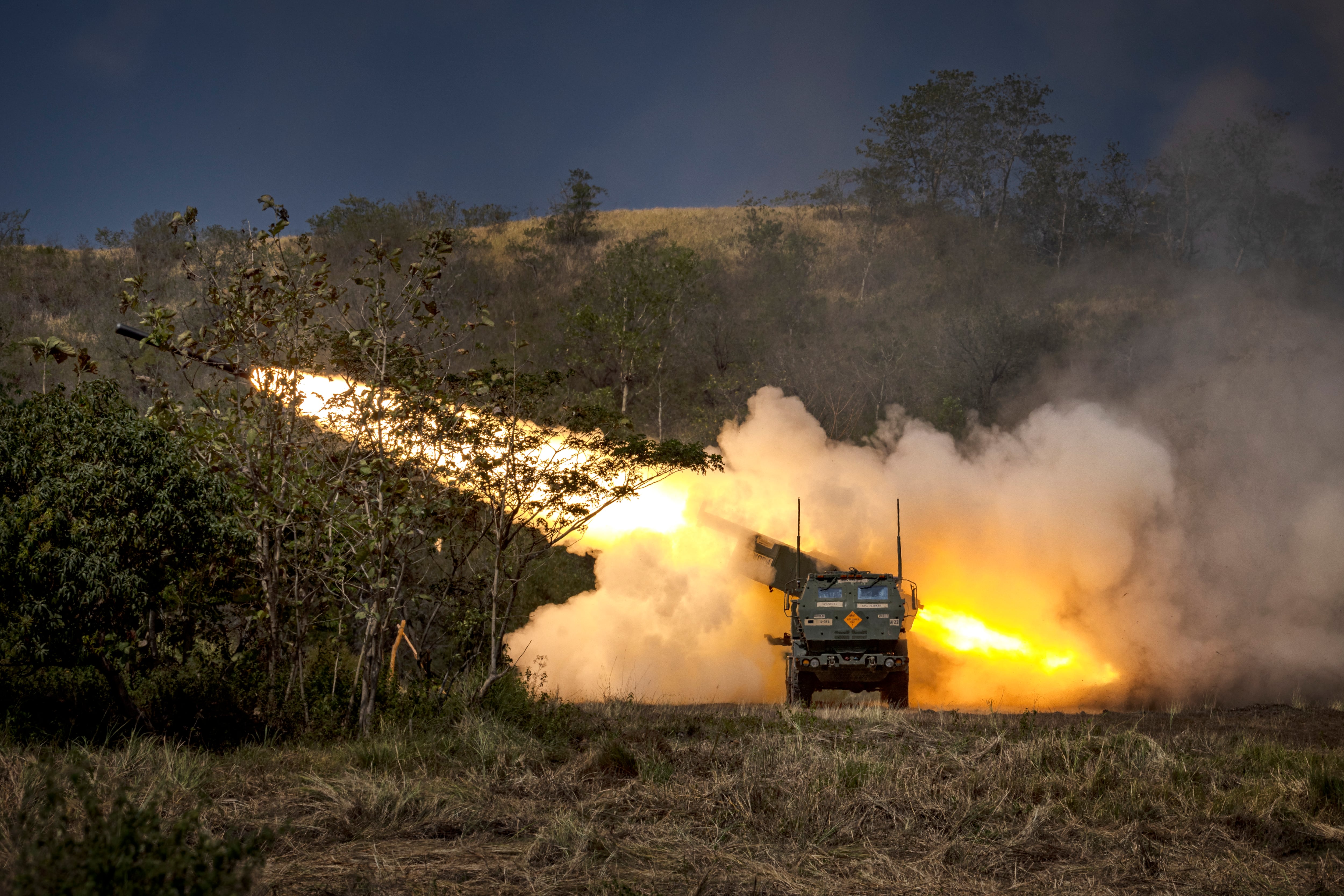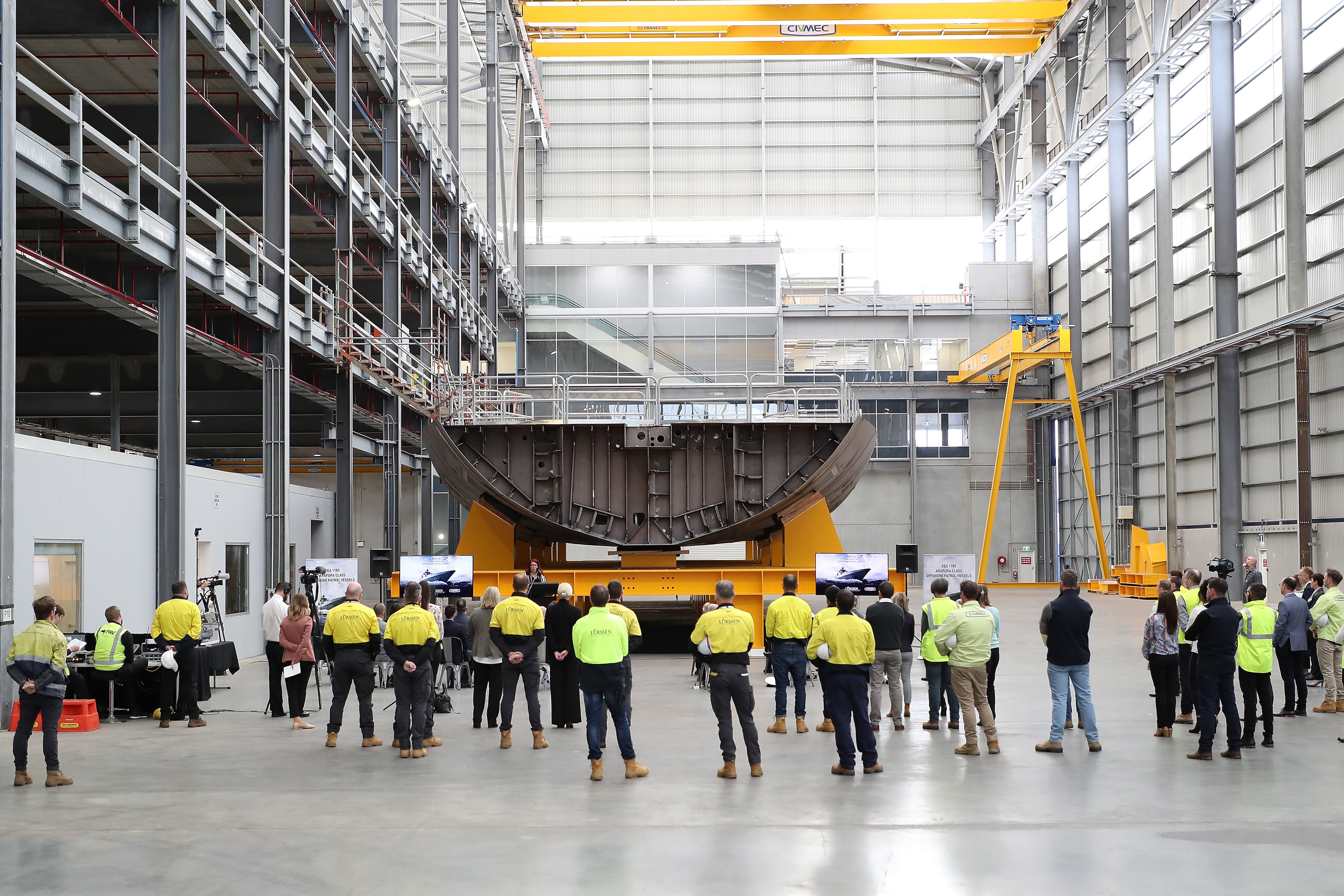MELBOURNE, Australia — Australia’s defense minister released the public version of the long-awaited Defence Strategic Review on Monday, which is meant to provide a blueprint to counter China’s influence in the Indo-Pacific region.
The 110-page report calls for fundamental changes to the structure of the Australian Defence Force to counter modern and emerging threats, but does so at the expense of capability acquisition and base infrastructure projects. While some efforts will simply undergo a delay or “re-scoping,” others will get canceled outright.
The review was conducted over several months by Angus Houston, a former Australian Defence Force chief, and Stephen Smith, a former defense minister. The effort was “the most ambitious review of Defence’s posture and structure since the Second World War,” according to the document.
“A large-scale conventional and non-conventional military build-up without strategic reassurance is contributing to the most challenging circumstances in our region for decades,” Defence Minister Richard Marles stated in his introduction to the report. “Combined with rising tensions and reduced warning time for conflict, the risks of military escalation or miscalculation are rising.”

The report also said the United States is no longer the unipolar leader in the region amid a return to strategic competition among major powers.
“As a consequence, for the first time in 80 years, we must go back to fundamentals, to take a first-principles approach as to how we manage and seek to avoid the highest level of strategic risk we now face as a nation: the prospect of major conflict in the region that directly threatens our national interest,” the report read. “Strategically, we may have already entered a decisive period for the Indo-Pacific. As a result, our ability to address the reduced strategic warning time identified in the 2020 Defence Strategic Update has come into sharper relief.”
That 2020 document acknowledged Australia’s traditionally held view that the nation would have a decade of warning time to prepare itself for conflict no longer applied. The latest Defence Strategic Review takes this one step further, calling for a three-stage strategy beginning with a two-year period between now and 2025 to address “matters which must be prioritised and addressed urgently.” A second period would follow between 2026 and 2030, and then a third “beyond 2031.”
The Defence Strategic Review also recommended the government commission a new version every two years in place of the sporadically released defense whitepapers of the past.
Furthermore, it calls for a change in the military’s Defence of Australia doctrine — adhered to over the past 50 years — to one which will see a more integrated force able to respond to rapidly changing risks.
“The current Australian Defence Force (ADF) force structure is based on a ‘balanced force’ model that reflects a bygone era. It does not adequately address our new strategic environment,” the review stated. “The ADF needs a much more focused force that can respond to the risks we face. It should be informed by net assessment and able to effect a strategy of denial.”
For the first time, the review addresses the need to harden Australia’s air bases and secure fuel supplies against attack from Australia’s north. In the past, these were couched in general terms; there are currently no hardened defense facilities.
Capability needs
The review calls for the military to apply several “critical capabilities,” including:
- Maritime drones that can perform intelligence, surveillance and reconnaissance missions on the surface and underwater.
- An enhanced integrated targeting capability.
- Enhanced long-range precision strike weapons for all domains of warfare.
- An amphibious-capable combined-arms land system.
- All-domain maritime capabilities for sea-denial operations.
- A networked expeditionary air operations capability.
- An enhanced integrated air and missile defense system.
- A joint and expeditionary theater-logistics system.
- A theater command-and-control network.
- A network of northern bases for logistics support, denial and deterrence.
The Royal Australian Navy’s plan to acquire a nuclear-powered attack submarine under the AUKUS framework is also a linchpin of the new Defence Strategic Review, as is the government’s continuous naval shipbuilding strategy. The AUKUS deal between Australia, the United Kingdom and the United States is meant to improve information and technology sharing efforts between the allies.
“The acquisition of conventionally-armed, nuclear-powered submarines will transform Navy’s capability,” the report read. “Nuclear-powered submarines are key assets both in effecting a strategy of denial and in the provision of anti-submarine warfare and long-range strike options.”
The government should expand efforts to acquire long-range precision strike weapons, including the recently announced plan to buy the American-made High Mobility Artillery Rocket System, and support plans to co-develop and purchase the American-made Precision Strike Missile, according to the review.

The military should also speed up the Army’s littoral combat maneuver program, the report said.
“Defence must rapidly accelerate and expand Army’s littoral manoeuvre vessels (medium and heavy landing craft) and long-range fires (land-based maritime strike) programs. This will require Army to re-posture key capabilities,” the document stated. “It is essential to immediately accelerate the acquisition of Land 8710 Phases 1 & 2 — Army Littoral Manoeuvre Vessels (Landing Craft Medium and Heavy) and expand the scope of this capability. Without this, only limited numbers of major land capabilities can be projected offshore.”
Change of plans
Meanwhile, cuts are to be made to fund the military’s future model. Key among these is confirmation that Army’s Land 400 Phase 3 program for a tracked infantry fighting vehicle — with an estimated value of AU$25 billion (U.S. $17 billion) — will be slashed from 450 vehicles to 129. That new quantity could equip a single mechanized battalion for littoral maneuver.
The second phase of the Army’s Land 8116 protected mobile fires project — an effort to acquire 30 more AS9 self-propelled howitzers and K10 ammunition resupply vehicles made by South Korea’s Hanwha — would also get scrapped under the review’s plan.
Furthermore, the review calls for an independent analysis of the Royal Australian Navy’s surface combatants by the end of the third quarter of this year. This could impact the service’s plans to build nine Hunter-class frigates and the generally unarmed Arafura-class offshore patrol vessels.

The report also quashes a suggestion that the Royal Australian Air Force acquire a small number of Northrop Grumman-made B-21 Raider strategic bombers.
“The Review has undertaken detailed discussions in Australia and the United States in relation to the B-21 Raider as a potential capability option for Australia. In light of our strategic circumstances and the approach to Defence strategy and capability development outlined in this Review, we do not consider the B-21 to be a suitable option for consideration for acquisition,” it stated.
The Defence Strategic Review also calls for a reform of the Capability Acquisition and Sustainment Group’s acquisition policy, labeling it as unsuitable for Australia’s current strategic circumstances. The group falls under the purview of the Defence Department.
Instead, in what appears to be a major blow for the Australian defense industry, the document calls for the rapid acquisition of more capabilities via a “sole source or off-the-shelf procurement” mechanism.
While applauding the forward-looking aspect of the review, Tim Dore, who serves as acting CEO of the defense industry trade association Defence Teaming Centre, warned of problems ahead for local business.
“We understand why the significant overhaul was needed. We are in a considerably different geopolitical environment than in 2020, and the DTC appreciates the government requesting the review early on in their tenure,” Dore said.
“However, there are numerous businesses who have lost out on work and who have lost hundreds of thousands of dollars in investments they had made to upskill their workforce and equipment based on Defence’s previous requirements, only to see the Government’s direction once again change. Neither the taxpayer nor the warfighter benefits from this indecision,” Dore added.
The Australian government has agreed — at least in principle — to all of the report’s recommendations. Further details regarding defense funding are expected to come in the federal budget on May 9.
Nigel Pittaway is the Australia correspondent for Defense News.




